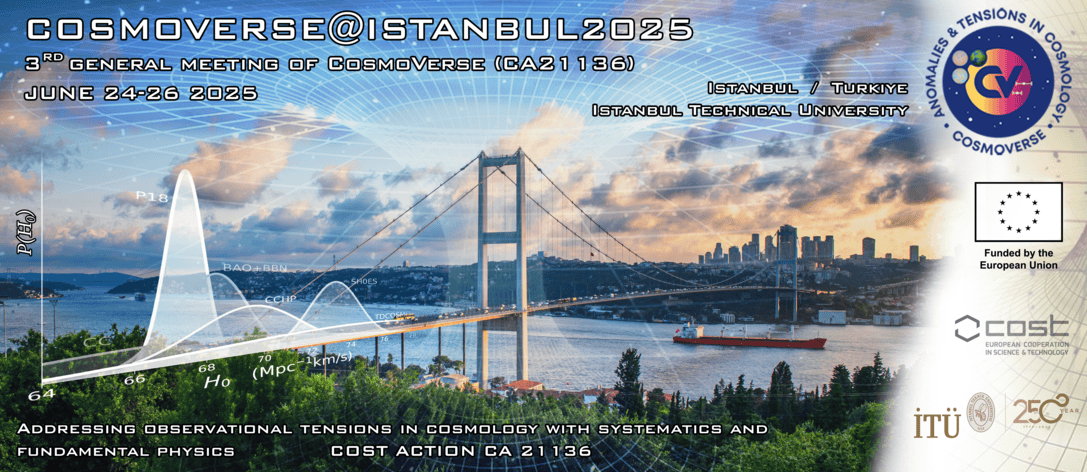Conveners
Morning session 2: (Tuesday)
- Eric Linder (UC Berkeley)
Morning session 2: (Wednesday)
- Özgür Akarsu (Istanbul Technical University)
Morning session 2: (Thursday)
- Geraint Lewis (Sydney Institute or Astronomy, The University of Sydney)
The path from Cepheid variables to type Ia supernovae gives a value of the Hubble constant which significantly disagrees with the value determined from observations of conditions in the early universe and a cosmological model. A totally independent measurement of H0 from observed redshifts and distances is needed to evaluate the possibilities of systematic errors. A path is being explored that...
I present an up-to-date compilation of published Hubble constant ($H_0$) measurements that are independent of the CMB sound horizon scale. This compilation is split in two distinct groups: A. Distance Ladder Measurements sample comprising of 20 recent measurements, primarily from the past four years, utilizing various rung 2 calibrators and rung 3 cosmic distance indicators. B.One-Step...
We explore the potential of cross-correlation between gravitational waves (GWs) and 21 cm intensity mapping (IM) from neutral hydrogen emission (HI), focusing on its role in view of future high-precision observatories, specifically Einstein Telescope (ET) and the Square Kilometer Array Observatory (SKAO). We model the large scale structure evolution by making use of 3D lightcones of the dark...
Dark energy away from a cosmological constant Λ – like early universe inflation that ends – can be understood in terms of well defined physical behaviors. These guide dark energy into thawing or freezing classes, with w0–wa arising as a physical calibration of the phase space. Other regions of phase space – zones of avoidance – require violation of some basic principle. We explore these cases,...
The Dark Energy Survey (DES) recently released the final results of its two main probes of the expansion history: Type Ia Supernovae (SN) and Baryonic Acoustic Oscillations (BAO). In this work, we explore the cosmological implications of these data in combination with external Cosmic Microwave Background (CMB), Big Bang Nucleosynthesis (BBN), and age-of-the-Universe information. The BAO...
Gravitational wave (GW) and multi-messenger (MM) astronomy provides new ways to gain insights into the Dark Energy (DE) phenomenology, through the distance-redshift relation, as well as into potential deviations from General Relativity (GR), via the distance duality relation. Both analyses involve the same astrophysical observables, making MM astronomy a powerful tool to explore simultaneously...
We are currently witnessing a remarkable era in the fields of cosmology and gravitation, as an ever-increasing amount of observational data continues to be collected. One of the most perplexing questions confronting cosmologists today concerns the mysterious source responsible for the Universe’s recent accelerated expansion. The most widely accepted explanations for this phenomenon involve...
The standard Lambda Cold Dark Matter (ΛCDM) cosmological model has proven remarkably successful in describing a broad range of observational data, ranging from the cosmic microwave background (CMB) radiation to the large-scale structure of the Universe. However, recent advances in precision cosmology have revealed persistent statistical discrepancies between independent data sets and...
We propose a novel dark energy mechanism rooted in the microscopic structure of spacetime, where quantum-induced topological transitions give rise to an effective cosmological constant. Within the framework of Euclidean Quantum Gravity, gravitational instantons emerging at the spacetime foam level induce changes in topology, activating the Gauss-Bonnet term in four dimensions. This leads to a...

